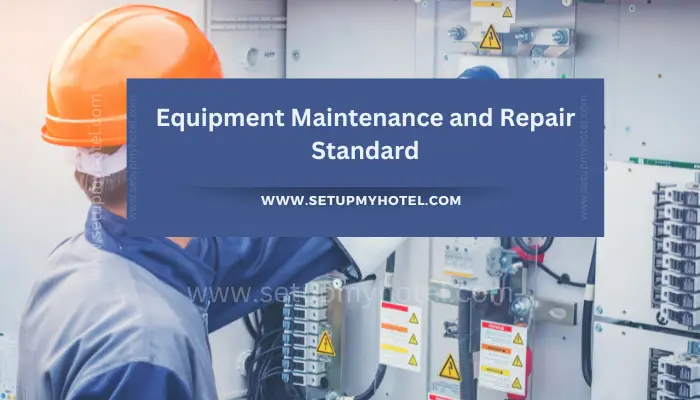Standard Operating Procedure for Engineering – Equipment Maintenance and Repair Standard
1. Purpose: Clearly state the purpose of the Equipment Maintenance and Repair Standard Procedure, such as ensuring equipment reliability, minimizing downtime, promoting safety, and extending equipment lifespan.
2. Scope: Define the scope of the procedure by specifying the types of equipment covered, relevant departments, and the frequency of maintenance and repair activities.
3. Responsibilities: Identify and assign responsibilities to individuals or teams involved in equipment maintenance and repair, including operators, maintenance technicians, supervisors, and management.
4. Maintenance ScheduleA schedule is a report which gives supporting details to a property's financial statements.: Develop a comprehensive maintenance schedule outlining regular preventive maintenance tasks, inspection intervals, and any seasonal or usage-dependent activities. This can be presented in the form of a calendar or a maintenance planner.
5. Inspection and Testing Procedures: Define the procedures for routine inspections and testing of equipment. Include checklists, inspection criteria, and testing methods. Specify what to look for during inspections and how to document findings.
6. Calibration Procedures: If applicable, outline the calibration procedures for equipment that requires periodic calibration. Include calibration intervals, equipment requirements, and documentation processes.
7. Repair Procedures: Detail the steps for conducting repairs, including troubleshooting, ordering replacement parts, and completing the repair process. Include safety precautions and guidelines for handling hazardous materials.
8. Record-Keeping: Establish a system for documenting all maintenance and repair activities. Include logs, records, and reports to track equipment history, identify trends, and support data-driven decision-making.
9. Training and Qualifications: Specify the training requirements and qualifications necessary for personnel involved in maintenance and repair activities. Ensure that staff is adequately trained to perform their assigned tasks.
10. SafetySafety is a condition in which persons are safe from injury; hurt; or loss while present in the work... Procedures: Emphasize safety protocols throughout the document, addressing potential hazards associated with maintenance and repair activities. Include information on personal protective equipment (PPE) requirements.
11. Emergency Procedures: Provide clear instructions on what to do in the event of equipment failure or emergencies during maintenance and repair activities. Include emergency contact information and shutdown procedures.
12. Continuous Improvement: Encourage a culture of continuous improvement by including mechanisms for feedback, regular review of procedures, and updating the document to reflect lessons learned and technological advancements.
13. Compliance: Ensure that the Equipment Maintenance and Repair Standard Procedure complies with relevant industry standards, regulations, and internal policies.
Equipment Maintenance and Repair Standard Procedure:
- Read the warranty information supplied with each piece of new equipment to learn what the manufacturer recommends.
- Put all literature supplied in a three-ring binder.
- Assign the binder to managers and require new managers to review it.
- Prepare a one-page maintenance sheet and post it where it will be seen.
- List appropriate clean dates and a box to initial and date when cleaning is completed.
- Insist that managers pay attention to maintenance schedules.
- Post a list of local service agencies, their phone numbers, and which brands they cover.
- Upon start-up of a new facility, place a list in the front of the binder containing the make, model, serial number, and date, along with the service and warranty period for each piece of equipment.
- SetSet: Allowing an item to go from a soft or liquid state to a firmer more solid state. up service, cleaning, and inspection programs for all operational equipment with service agents.
- Set up a regular exhaust hood and duct cleaning program to prevent fires.
Training Summary questions:
Q1. Why it is important to read the warranty information provided by the manufacturer?
Q2. Advantages of putting the product information in a three-ring binder?
Q3. Why managers should pay attention to maintenance schedules?
Q4. What needs to be done upon the startup of the new facility?
Q5. Who is responsible for overseeing all engineering and maintenance activities?
Patreon Only SOP Download
SOP Number: Hotel Engineering SOP – 27
Department: Engineering and Maintenance
Date Issued: SOP DATE
Time to Train: 15 Minutes












